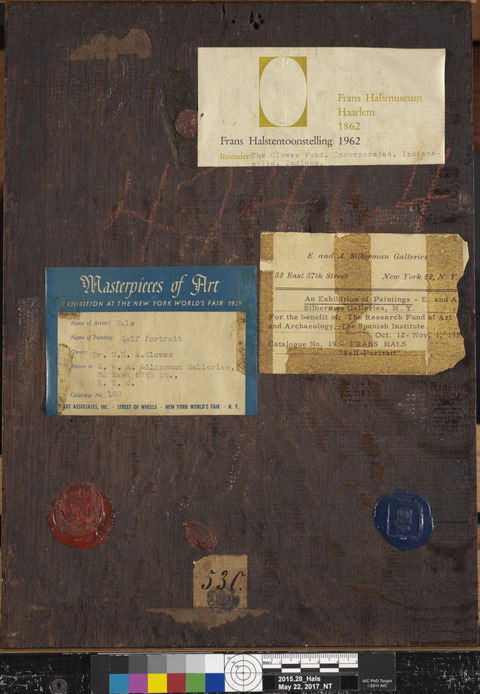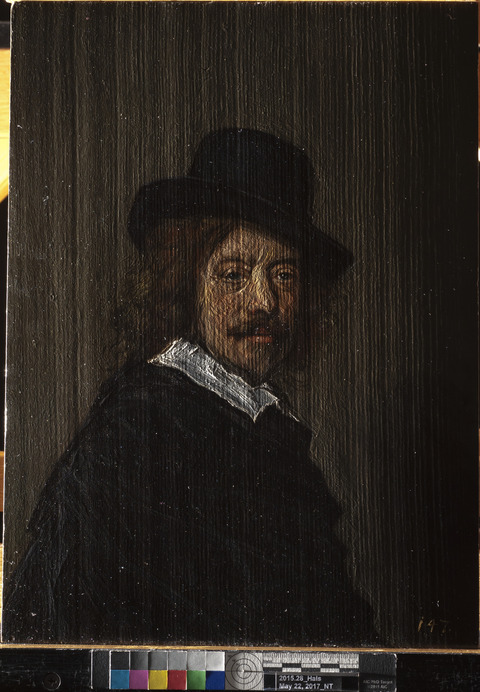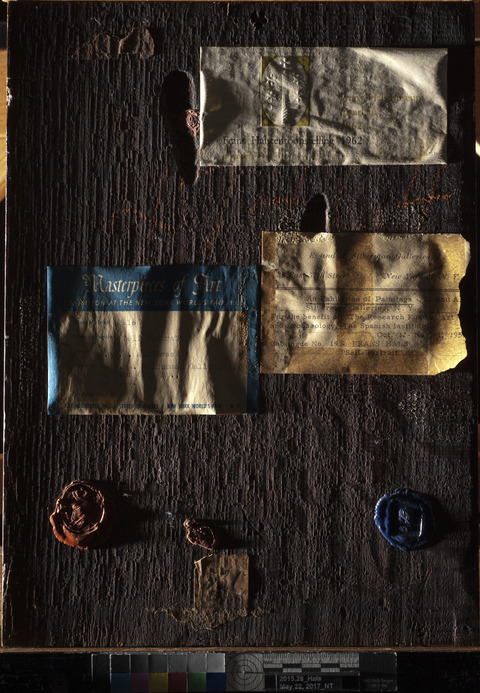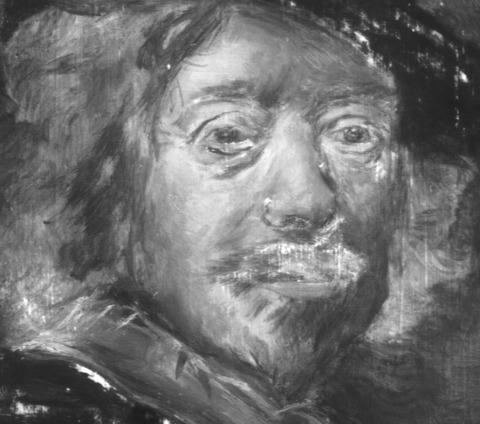Overview
Identification number: 2015.28
Artist: After Frans Hals
Title: Portrait of the Artist
Materials: Oil on quarter-sawn oak panel
Date of Creation: About 1650
Previous number/accession number: C10047
Dimensions:
34.29 × 25.5 × 0.6 cm (tapering to 0.4 cm along the top-right side)
Conservator/examiner: Gregory D. Smith and Linda Witkowski
Examination completed: 2022
Distinguishing Marks
Front:
Item 1. “i47” [sic, meaning “147”] brush-applied in a pale yellow paint, lower-right corner of the panel (tech. fig. 1)
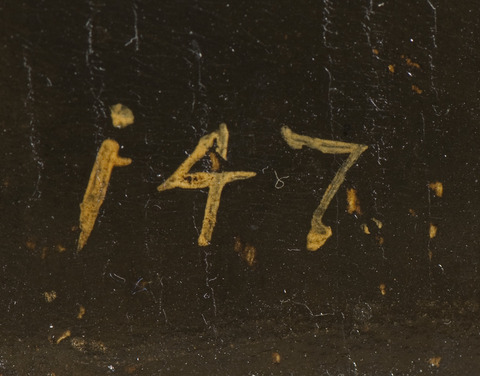
Back:
Item 2. Top-center: small red wax seal with a crescent partially covered by a paper label (tech. fig. 2)
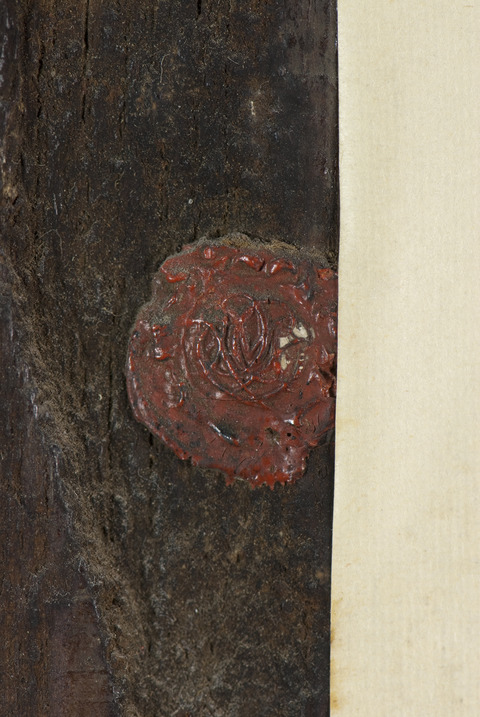
Item 3. Top-right: preprinted paper label, stamped, “Frans Halsmuseum/Haarlem/1862/… Frans Halstentoonstelling 1962/…Inzender: The Clowes Fund, Incorporated, Indianapolis, Indiana.” (tech. fig. 3)
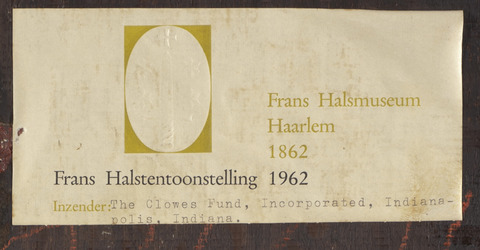
Item 4. Partially covered by paper labels, number “47464” applied directly onto the wood panel with a red-orange oily chalk (tech. fig. 4)
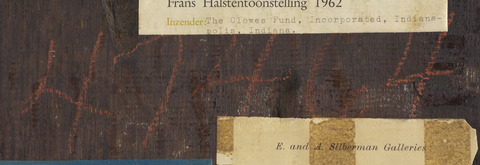
Item 5. Center-left: pre-printed exhibition label with remnants of clear tape, “Masterpieces of Art/Exhibition at the New York World’s Fair 1939/…Name of Artist: Hals/ Name of Painting: “Self Portrait”/ Owner: Dr. G.H. A. Clowes/Return to: E.&. A. Silberman Galleries, 32 East 57th St., N.Y.C./ Cata;pqie No: 188/…Art Associates, Inc – Street of Wheels – New York World’s Fair - N.Y.” (tech. fig. 5)
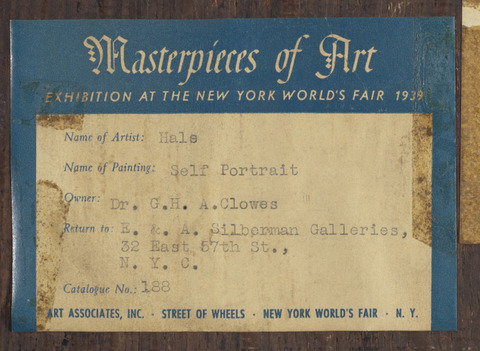
Item 6. Right-center: preprinted exhibition label with remnants of clear tape, “E. and A. Silberman Galleries/ 32 East 57th Street/ …An Exhibition of Paintings – E. and A. / Silberman Galleries, N.Y./…For the benefit of: The Research Fund of Art/ and Archaeology,- The Spanish Institute./ … Oct. 12 – Nov. 1, 195? ( missing )/… Catalogue No. 19 – FRANS HALS/…“Self-Portrait.” (tech. fig. 6)
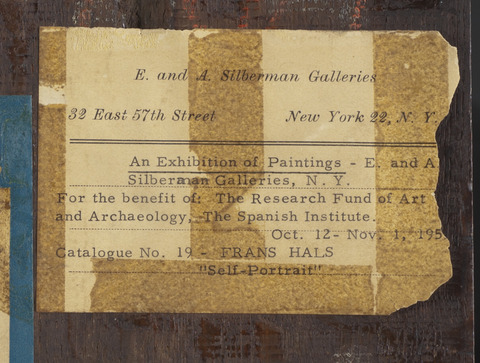
Item 7. Bottom-left: a large red wax seal (tech. fig. 7)
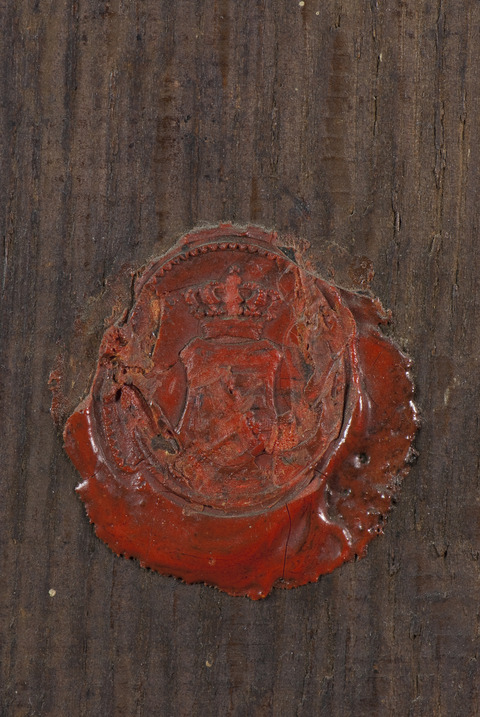
Item 8. Bottom-center: a smaller red wax seal (tech. fig.8)
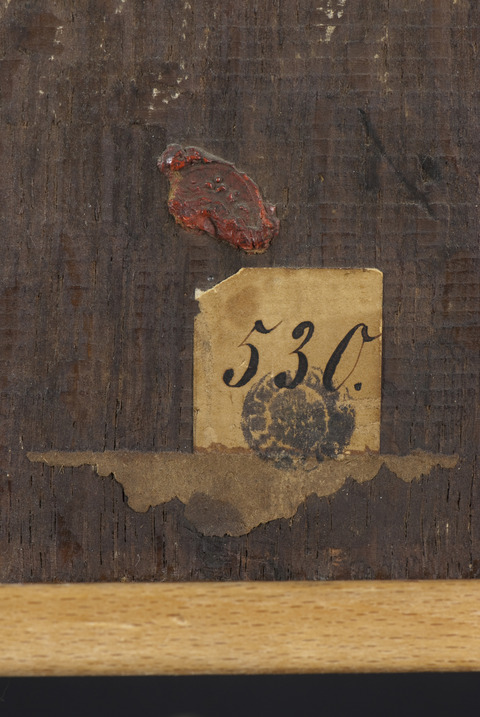
Item 9. Bottom-right: blue wax seal in which the crescent has been mechanically tooled away (tech. fig. 9)
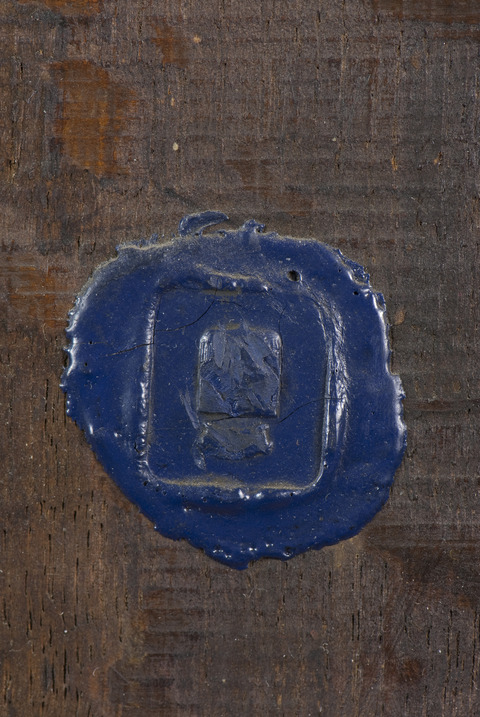
Summary of Treatment History
A full examination of the painting was undertaken at the Indianapolis Museum of Art in early 2010 with the subsequent conservation occurring in 2011–2012. During that time, treatment on the painting included the removal of old varnish and retouching. The work was also examined in the Clowes Collection annual survey from 2011 to 2019.
IMA conservation notes indicate that the painting was subject to small cleaning tests on 31 July 1987. At that time, the surface grime (and possibly the varnish) was sensitive to controlled applications of deionized water, which would cause major bloom and appeared to affect the varnish. Additional tests with isopropanol and MEK indicated that the varnish was readily soluble in both. The painting was also viewed under ultraviolet-induced visible fluorescence, which indicated a very heavy green fluorescence and revealed only small, localized areas of retouching. The painting was also examined under infrared reflectography, which yielded an unusual image of the face. No X-radiographs were taken at that time, and no further testing was undertaken on the ground and paint layers. Conservation was confined to dusting the surface and applying a very thin brush coat of 15% Laropal K80 Varnish in Stoddard solvent to evenly saturate the colors and existing coating(s).
Prior to this, per a loan request dated 13 December 1982, IMA conservation notes mention the yellowed, bloomed and finger-marked varnish layer as well as the presence of old losses and abrasions. The thinness of the uncradled panel is also mentioned. There are no other IMA-based conservation records for treatment of the painting. However, in A. Ian Fraser’s 1973 catalogue of the Clowes Collection, the author states that, “At one time this picture was overpainted as a woman. When a technical examination was carried out about 1934, it revealed a self-portrait, which several copies had been made. At that time, the painting was in the hands of a New York dealer."1 Further research into this has revealed that, at present, no written copy exists of a 1934 technical exam, and no images exist of the painting during that time. In the Clowes Collection historical files, a copy of a letter by W.H. Valentiner from 16 February 1934 references the portrait as being by Hals, but no mention is made of the portrait having been overpainted or that a technical examination had been undertaken or referred to.
Current Condition Summary
Having undergone recent conservation treatment, the painting and wood panel support are stable and in good condition.
Methods of Examination, Imaging, and Analysis
| Examination/Imaging | Analysis (no sample required): | Analysis (sample required): |
|---|---|---|
| Unaided eye | Dendrochronology | Microchemical analysis |
| Optical microscopy | Wood identification | Fiber ID |
| Incident light | X-ray fluorescence spectroscopy (XRF) | Cross-section sampling |
| Raking light | Macro X-ray fluorescence scanning (MA-XRF) | Dispersed pigment sample |
| Reflected/specular light | Fourier-transform infrared spectroscopy (FTIR) | |
| Transmitted light | Raman microspectroscopy | |
| Ultraviolet-induced visible fluorescence (UV) | ||
| Infrared reflectography (IRR) | Gas chromatography–mass spectrometry (GC-MS) | |
| Infrared transmittography (IRT) | Scanning electron microscope -energy dispersive X-ray spectroscopy (SEM-EDS) | |
| Infrared luminescence | Other | |
| X-radiography |
Technical Examination
Description of Support
Analyzed Observed

Material (fabric, wood, metal, dendrochronology results, fiber ID information, etc.):
The painting is on a single oak panel with vertically oriented grain (tech. fig 10). The panel is approximately 8 mm thick and arranged with its latest rings towards the left. The back has a machine-sawn surface showing regularly spaced straight and perpendicular saw marks that are typical of machine-powered sawmills used in the first or second decade of the seventeenth century.2
When viewed in raking light, the grain is prominent. This is evident on both the painted and unpainted side of the panel. The interstices of the grain are visible in the X-radiograph (tech. fig 12) as a result of the presence of the preparatory ground and imprimatura layers on the panel.
Dendrochronological analysis by Ian Tyers found that the board used for the panel was from a tree that was still growing in 1626.3 The minimum expected number of sapwood rings likely to be missing from a board from western-European-sourced timber is eight years, providing a terminus post quem for the painting of about 1634. Finally, the tree ring sequence along the lower edge of the board was also found to match against Netherlandish regional reference data.
Characteristics of Construction / Fabrication (cusping, beveled edges of panels, seams, joins, battens):
The original panel has not been thinned. On the back of the panel, no bevel is evident along the edges, though a very slight tapering is evident from the right side to the left. A central nail hole with four smaller partial holes is observed along the top-center edge of the panel. Slightly below this is the first of two tooled gouges in the wood (2-1/2 × 7/8 in). To the right and below this, the other gouge (1-3/4 × 5/8 in) is partially covered by a preprinted paper label. In the lower center of the back of the panel is a possible “Z” or “2” incised with a chisel.
Thickness for panel:
When viewed from the front, 0.6 cm (7/32 in) on the left and tapering to 0.4 cm (5/32 in) towards the right.
Condition of Support
The wood panel is in remarkably stable condition exhibiting only a very minute convex warp that is almost indiscernible. All sides of the panel are observed to be original and exhibit no signs of alteration.
Description of Ground
Analyzed Observed
An off-white chalk ground—likely in an animal glue binder (untested)—that was thinly applied directly on top of the panel can be seen beneath an old paint loss along the left-center of the composition (tech. figs. 11, 12). An oil-based, gray imprimatura (untested) containing large lead white particles is present over the entire panel, which is evident from the localized area of loss as well as other areas of the composition where the imprimatura is exposed.
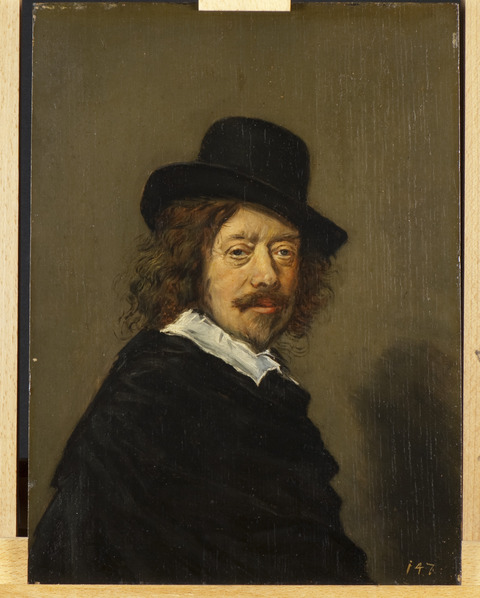
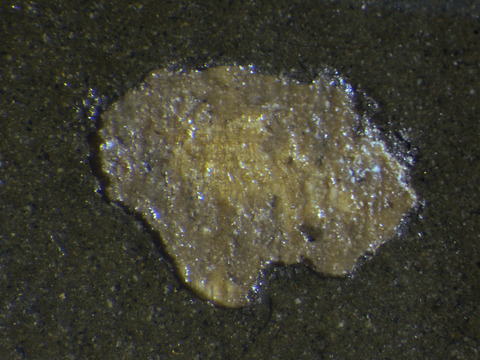
Materials/Binding Medium:
Calcium carbonate/lead white
Color:
Off-white
Application:
The ground was applied over the panel, and as evidenced from the X-radiograph, was scraped down to create a thin smooth layer. However, as reflected in the ground, imprimatura, and subsequent paint layers, exposure to varying climates over time has caused the grain of the wood panel to become more prominent.
Thickness:
Thin
Sizing:
Glue size (untested)
Character and Appearance (Does texture of support remain detectable / prominent?):
Readily observed in raking light, the raised grain of the wood panel remains prominent throughout the ground, imprimatura, and paint layers.
Condition of Ground
Consistent with the age of the painting, craquelure is present in the ground, though it is relatively stable. Small losses are present throughout the composition, particularly along the edges of the panel. A localized area of larger loss is present within the sitter’s mouth.
Description of Composition Planning
Methods of Analysis:
Surface observation (unaided or with magnification)
Infrared reflectography (IRR)
X-radiography
Analysis Parameters:
| X-Ray equipment | GE Inspection Technologies Type: ERESCO 200MFR 3.1, Tube S/N: MIR 201E 58-2812, EN 12543: 1.0mm, Filter: 0.8mm Be + 2mm Al |
|---|---|
| KV: | 20 |
| mA: | 3.0 |
| Exposure time (s) | 60 sec |
| Distance from x-ray tube: | 36’ |
| IRR equipment and wavelength | Opus Instruments Osiris A1 infrared camera with InGaAs array detector operating at a wavelength of 0.9-1.7µm. |
Medium/Technique:
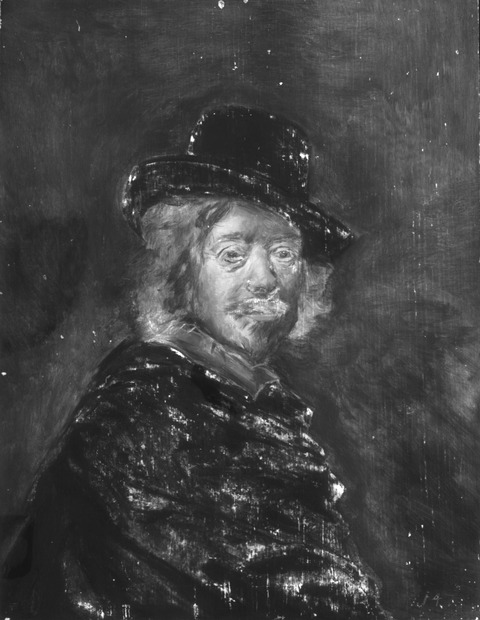

The composition was sketched over the warm gray imprimatura using slightly dark brown paint. Evidence of any dry media used by the artist to sketch the portrait does not appear to exist. The brush-applied execution of the sketch and finishing paint layers (as well as subsequent losses) are noticeable in the infrared reflectogram of the painting (tech. fig. 13) and to a lesser extent in the X-radiograph (tech. fig. 14).
Description of Paint
Analyzed Observed
Application and Technique:
The paints have been spontaneously, yet confidently, applied on top of the underlying umber-brown dead-coloring in several strokes of varying thickness (tech. fig.15). This is particularly noticeable in the sitter’s clothing where thicker applications of white paint can be seen in the collar and upper layers of the cloak. In the cloak, several loosely but heavily applied brushstrokes of black paint are found on top of an underlayer of brown-black paint that was more thinly applied. X-radiography (tech. fig. 13) and IRR (tech. fig. 14) reveal several passages of spontaneously applied paint in the green background where loosely applied brushstrokes of color are juxtaposed with more controlled applications of paint immediately surrounding the sitter’s hat and clothing. In like manner, ranging variations of paint application are observed in the sitter’s face and hair where finishing touches of dark black accents delineate the eyes, mustache, beard, and hair. Similar black accents are observed intermittently along the outer edges of the hat and cloak as well (tech. fig. 15).
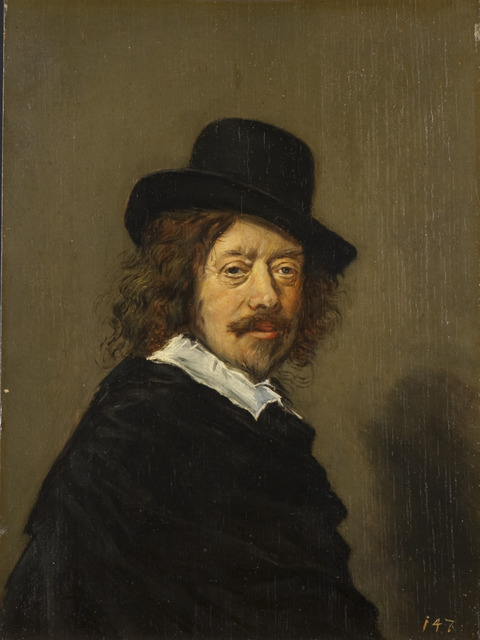
Painting Tools:
Small to medium-sized brushes
Binding media:
Oil (untested)
Color Palette:
Elemental data derived from Macro-XRF scanning reveal that the pigments used in the portrait comprise lead white, calcium carbonate, umber, likely green earth, vermilion, bone or ivory black, and—due to the lack of any strong phosphorus or calcium signal in some areas of the black hat and cloak—possibly a second carbon-based black. Maps of the elements titanium, chromium, and zinc show small localized areas of previous restoration (tech. figs. 16–20).
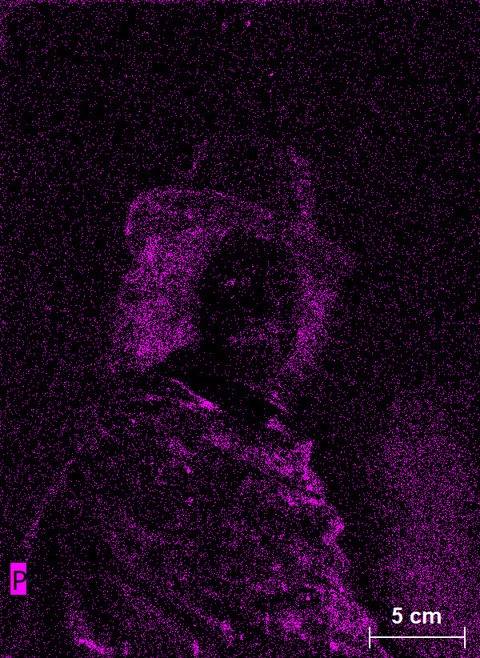
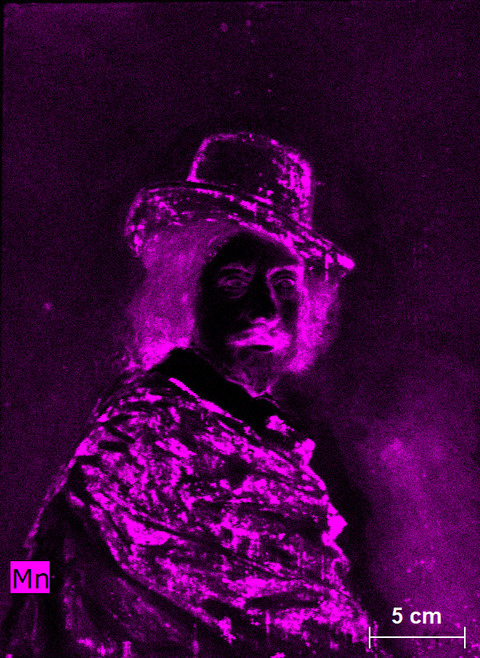
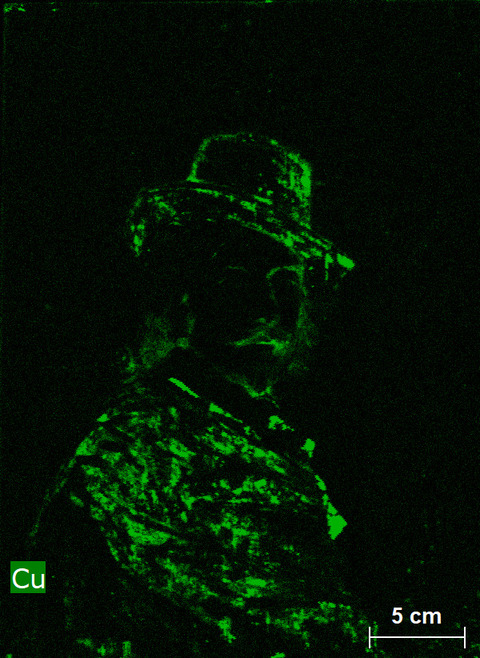
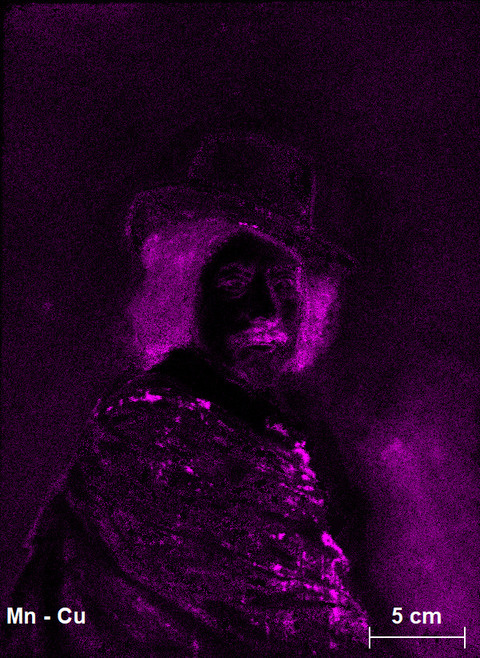
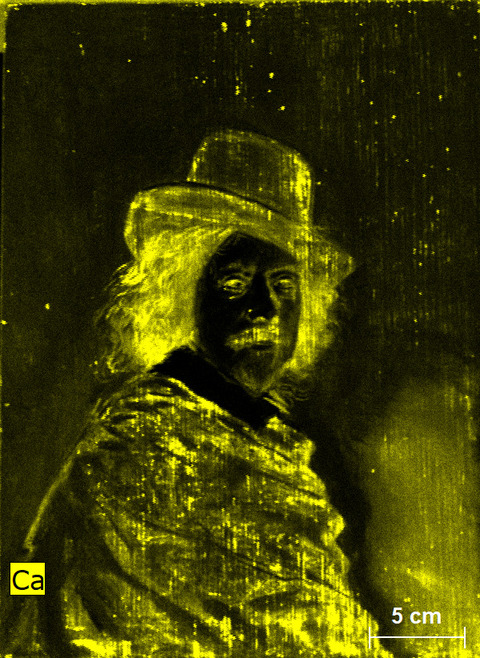
Condition of Paint
The adhesion between the paint and ground layers appears to be generally sound. Age, mechanical, and traction crackle are observed via microscopic examination of the paint layers as well as areas of paint abrasion, the latter resulting from several restoration attempts over the history of the painting. Both crackle and abrasion are observed within the darker black accent and painted brushstrokes seen in the sitter’s face, eyes, mustache, mouth, goatee, hair, hat, and clothing (tech. figs. 21–27).
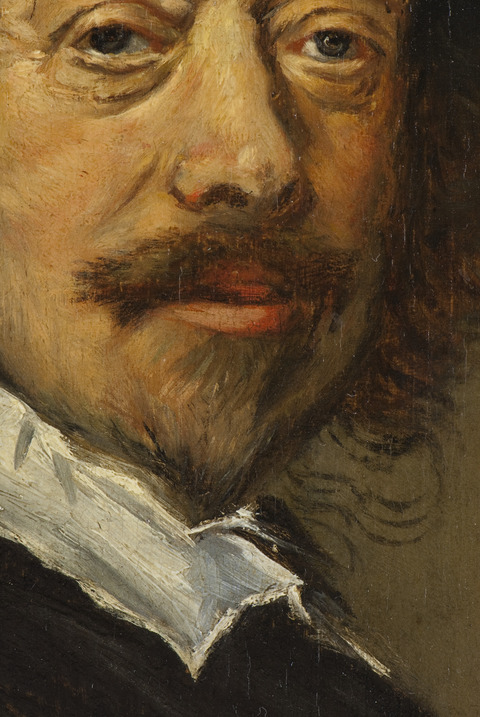
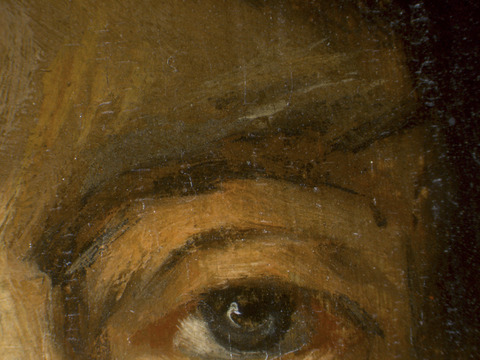
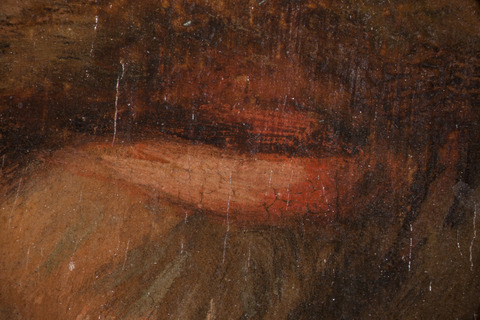
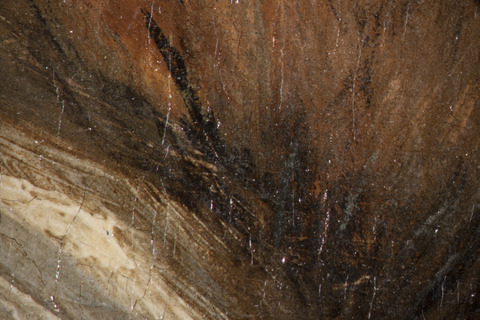
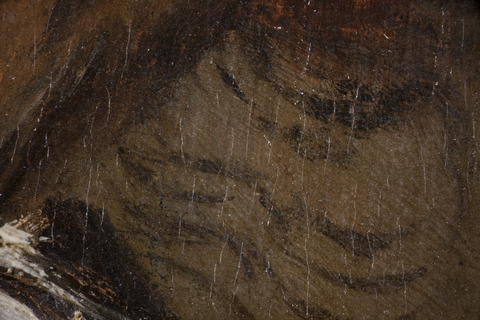
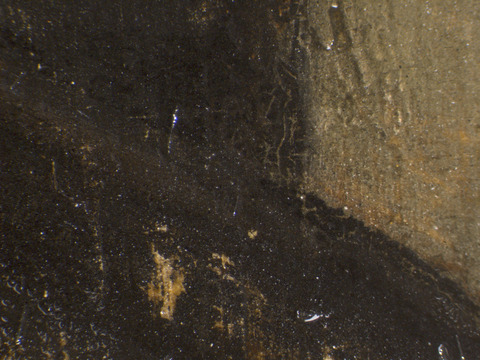
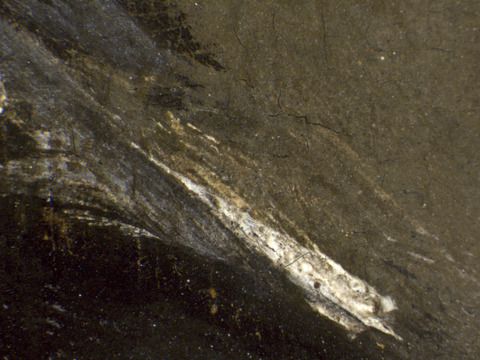
Localized areas of loss are observed in the sitter’s proper right eye where the highlight and parts of the pupil, iris, and eyeball are missing (tech. fig. 28). However, the original “position” of the missing highlight and areas of the pupil and iris were indicated using an Artax micro-XRF instrument (tech. fig. 30). During the 2011–2012 treatment, this information was invaluable in achieving the overall location of the pupil and subsequent addition of the highlight in the proper right eye via localized inpainting with easily reversible colors (tech. figs. 29–32).
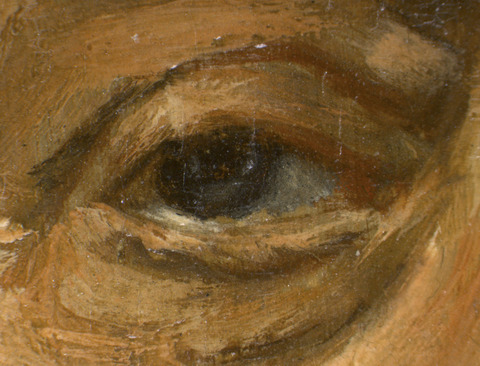
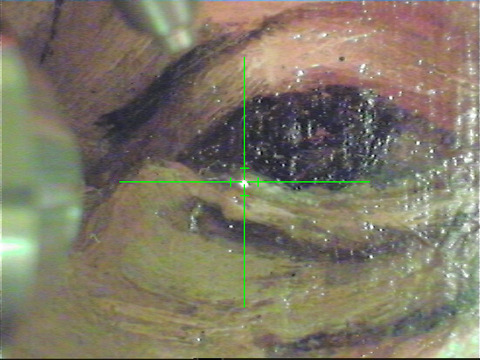
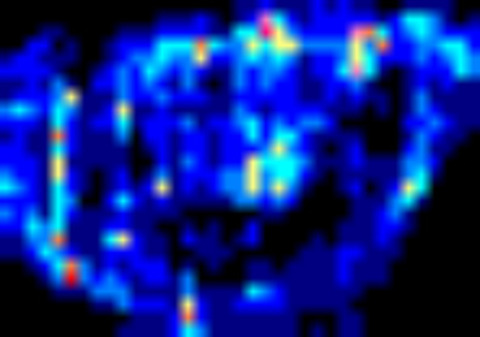
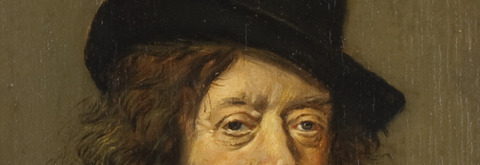
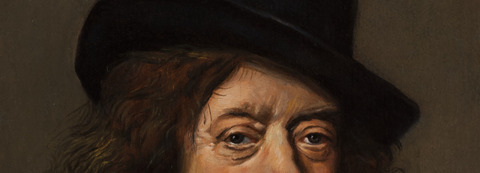
Description of Varnish/Surface Coating
Analyzed Observed Documented
| Type of Varnish | Application |
|---|---|
| Natural resin | Spray applied |
| Synthetic resin/other | Brush applied |
| Multiple layers observed | Undetermined |
| No coating detected |
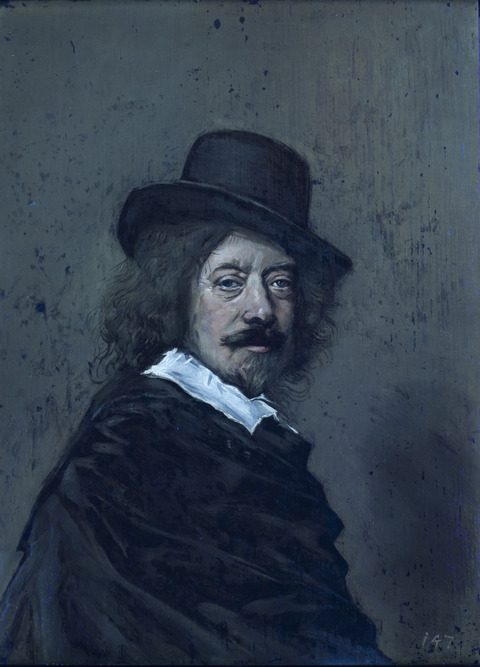
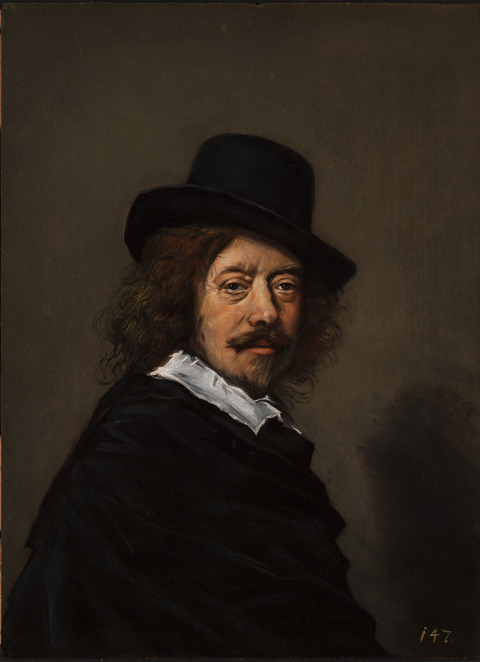
The surface of the painting has a varnish coating of 5% Acryloid B-72 that was brush applied and two layers of spray varnish composed of 25% Damar to which Tinuvin was added. During the 2011–2012 treatment, a thin coating of 15% Laropal K80 (applied in 1987) was removed in addition to more than one underlying layer of Damar as well as recent and old areas of retouch. Extremely old areas of retouch present in the background were removed only as safety permitted (tech. figs. 33, 34).
Condition of Varnish/Surface Coating
The conserved painting has a clear varnish with appropriate gloss and saturation. The composition has been reintegrated via localized inpainting that is also appropriately saturated.
Description of Frame
Original/first frame
Period frame
Authenticity cannot be determined at this time/ further art historical research necessary
Reproduction frame (fabricated in the style of)
Replica frame (copy of an existing period frame)
Modern frame
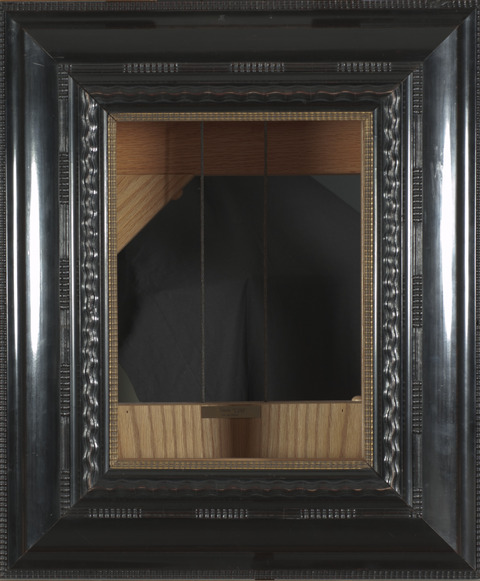
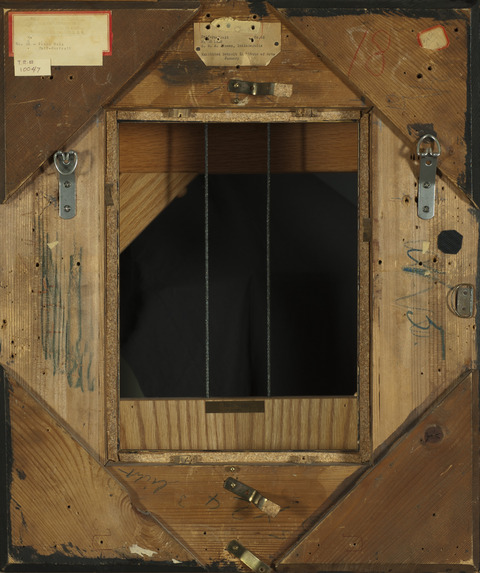
Frame Dimensions:
Outside frame dimensions: 57.78 × 48.9 cm
Sight size: 33.6 × 24.13 cm
Distinguishing Marks:
Back: (see tech. fig. 36)
Item 12. Frame, off-white label with red border, back upper-left corner, stamped, “THE CLOWES FUND INCORPORATED/ FINE ARTS DEPARTMENT/...14 SPRING HOLLOW ROAD/ INDIANAPLLIS 8, INDIANA, U.S.A."; typed sticker over label, “No. 36 – Frans Hals/ Self-Portrait” hand-written piece of paper over sticker “T.R.#/ 10047”
Item 13. Frame, off-white label, back upper-center, typed, “Self-Portrait….No. 49/ FRANS HALS/ G.H.A. Clowes, Indianapolis/ Exhibited Detroit Institute of Arts/ January”
Item 14. Frame, “18” written in with a red grease pencil, back upper-right corner
Item 15. Frame, off-white sticker with red border, back upper-right corner, written in graphite, “3456”
Item 16. Frame, undecipherable graphite inscription (?), back upper-right corner
Item 17. Frame, partial number (?) written in blue grease pencil and blocked out, back center right, “? 5”
Item 18. Frame, partially covered numbers written upside-down in black grease pencil, back bottom-center, “__5 x 24”
Item 19. Frame, incised in wood but covered out with a blue grease pencil, back left-center, “235 + 24”
Description of Molding/Profile:
Early twentieth-century ebonized wooden Dutch frame. The frame consists of four members that have mitered joins (tech. fig. 35). Wood braces have been attached on top of each mitered corner. The inner frame element is ornate and gilded. The rabbet is lined with cork.
Condition of Frame
The frame is stable and in excellent condition.
Notes
-
A. Ian Fraser, A Catalogue of the Clowes Collection (Indianapolis: Indianapolis Museum of Art, 1973), xxxiii. ↩︎
-
Ian Tyers, “Tree-Ring Analysis and Wood Identification of Paintings from the Indianapolis Museum of Art: Dendrochronological Consultancy Report 1082,” January 2019, Conservation Department files, Indianapolis Museum of Art at Newfields. ↩︎
-
Ian Tyers, “Tree-Ring Analysis and Wood Identification of Paintings from the Indianapolis Museum of Art: Dendrochronological Consultancy Report 1082,” January 2019, Conservation Department files, Indianapolis Museum of Art at Newfields. ↩︎
Additional Images

